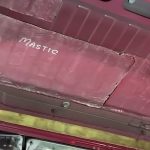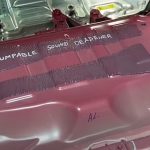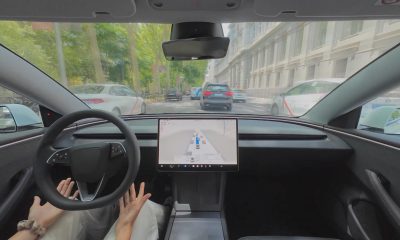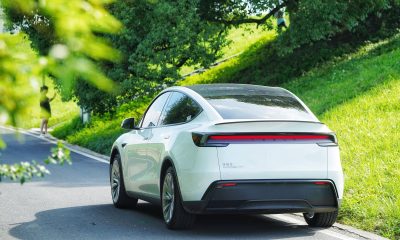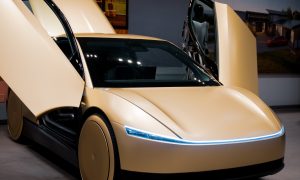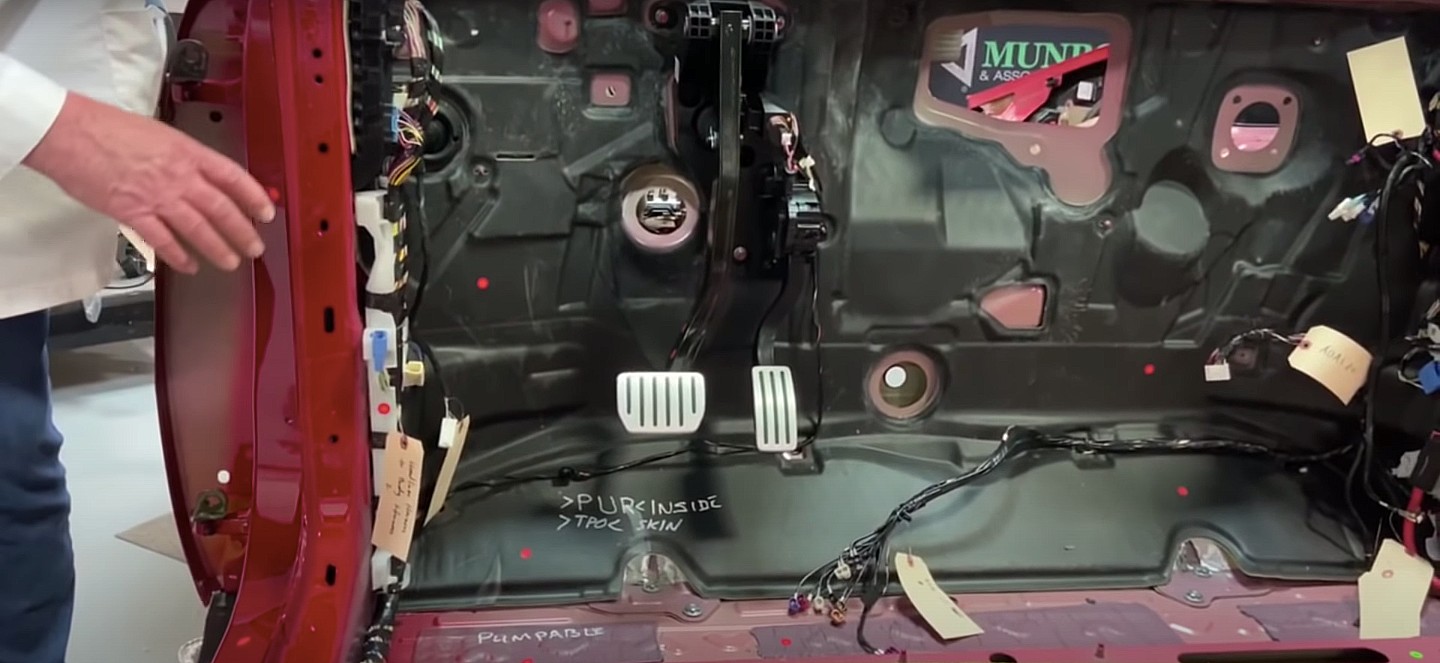

News
Tesla Model Y’s quiet cabin is a subtle, critical selling point for all EV buyers
When Tesla unveiled the Model 3 in the summer of 2017, the company had released its first affordable vehicle. The Model 3 had numerous selling points, though some first production vehicles were reported to exhibit a lot of road noise inside the cabin, especially at high speeds.
Model 3 owners looked for any number of ways to reduce the noise. These included aftermarket door seals, tire foam insulation, and other modifications. Later builds of the vehicle displayed an improved noise reduction system, as CEO Elon Musk had noted in October 2019 that cabin noise had been “significantly improved in current production” of the Model 3.
In a recent episode of Sandy Munro’s extensive Model Y teardown series, the automotive veteran took a look at the numerous improvements Tesla made to its electric crossover. While the Model Y is not a sedan like the Model 3, the two vehicles are effectively siblings as they share 75% of the same parts.
Tesla adopted several new strategies to keep the Model Y’s cabin quiet. According to Munro, the outer portion of the vehicle’s firewall was covered by a mat made of “lofted fiberglass.” Fiberglass is an excellent insulating material that is used within residential buildings and houses to maintain temperature. However, it is also useful for reducing sound due to its thick and dense nature.
The inside of the firewall, which faces inward toward the vehicle’s cabin is quite different. Tesla used polyurethane (PUR) and Thermoplastic Polyolefin (TPO). PUR is a material commonly used when soundproofing rooms and is usually shaped like an egg carton to deaden sound waves. TPO is traditionally utilized for roofing and uses a mixture of rubber, talc, glass, carbon fiber, and other materials to insulate heat and sound. It is also used to reduce cabin noise in cars, as its flexible nature allows it to be conformed to the twists and turns of a vehicle’s body.
Additionally, Tesla opted to use a series of pumpable and mastic sound deadener strips throughout the floorboard of the Model Y. These two materials can remove vibrations from the vehicle by stiffening the areas in the Model Y’s frame that are prone to excessive vibration. Both the pumpable and mastic sound deadeners were more frequently placed in the rear portion of the vehicle, where noise and vibrations are especially potent.
- Tesla Model Y Mastic Strip (Credit: MunroLive on YouTube)
- Tesla Model Y Pumpable Sound Deadener (Credit: MunroLive on YouTube)
Tesla’s installation of these elements provided a much quieter ride for passengers and drivers. Long drives on highways at speeds of 55 MPH or more can prove to be some of the noisiest driving conditions, regardless of whether one is driving an EV or a petrol-powered car. This is due to wind, tire friction with the road, and outdoor weather conditions. These noises are easier to notice in an electric car, since the lack of a working internal combustion engine pretty much amplifies other noises in the cabin.
Tesla seems to have set out to make the Model Y its quietest car yet, and it seems to have succeeded. This is reflected in the feedback of some Model 3 owners, such as YouTube host Brian Jenkins, who recently posted a video documenting his favorite features of the Model Y after 1,200 miles of driving. Jenkins notes the Model Y’s quiet ride is one of his favorite features. He added that he expected more cabin noise, but the Model Y’s cabin remained quiet. Prior to getting a Model Y, Jenkins drove a Model 3 that he fitted with noise reduction seals.
Interestingly enough, Tesla has released Joe Mode last year, a feature that reduces the audible alerts in the vehicle’s rear to prevent kids from waking up during nighttime trips. Coupled with the Model Y’s already-quiet cabin, features like Joe Mode will be extra effective. It can even be an additional selling point for the vehicle. Every parent out there who has attempted long road trips with kids would attest to the importance of a quiet cabin when the kids are asleep, after all.
Watch Sandy Munro’s breakdown of the Model Y’s cabin noise reduction below.
Elon Musk
Why Tesla’s Q3 could be one of its biggest quarters in history
Tesla could stand to benefit from the removal of the $7,500 EV tax credit at the end of Q3.

Tesla has gotten off to a slow start in 2025, as the first half of the year has not been one to remember from a delivery perspective.
However, Q3 could end up being one of the best the company has had in history, with the United States potentially being a major contributor to what might reverse a slow start to the year.
Earlier today, the United States’ House of Representatives officially passed President Trump’s “Big Beautiful Bill,” after it made its way through the Senate earlier this week. The bill will head to President Trump, as he looks to sign it before his July 4 deadline.
The Bill will effectively bring closure to the $7,500 EV tax credit, which will end on September 30, 2025. This means, over the next three months in the United States, those who are looking to buy an EV will have their last chance to take advantage of the credit. EVs will then be, for most people, $7,500 more expensive, in essence.
The tax credit is available to any single filer who makes under $150,000 per year, $225,000 a year to a head of household, and $300,000 to couples filing jointly.
Ending the tax credit was expected with the Trump administration, as his policies have leaned significantly toward reliance on fossil fuels, ending what he calls an “EV mandate.” He has used this phrase several times in disagreements with Tesla CEO Elon Musk.
Nevertheless, those who have been on the fence about buying a Tesla, or any EV, for that matter, will have some decisions to make in the next three months. While all companies will stand to benefit from this time crunch, Tesla could be the true winner because of its sheer volume.
If things are done correctly, meaning if Tesla can also offer incentives like 0% APR, special pricing on leasing or financing, or other advantages (like free Red, White, and Blue for a short period of time in celebration of Independence Day), it could see some real volume in sales this quarter.
You can now buy a Tesla in Red, White, and Blue for free until July 14 https://t.co/iAwhaRFOH0
— TESLARATI (@Teslarati) July 3, 2025
Tesla is just a shade under 721,000 deliveries for the year, so it’s on pace for roughly 1.4 million for 2025. This would be a decrease from the 1.8 million cars it delivered in each of the last two years. Traditionally, the second half of the year has produced Tesla’s strongest quarters. Its top three quarters in terms of deliveries are Q4 2024 with 495,570 vehicles, Q4 2023 with 484,507 vehicles, and Q3 2024 with 462,890 vehicles.
Elon Musk
Tesla Full Self-Driving testing continues European expansion: here’s where
Tesla has launched Full Self-Driving testing in a fifth European country ahead of its launch.

Tesla Full Self-Driving is being tested in several countries across Europe as the company prepares to launch its driver assistance suite on the continent.
The company is still working through the regulatory hurdles with the European Union. They are plentiful and difficult to navigate, but Tesla is still making progress as its testing of FSD continues to expand.
Today, it officially began testing in a new country, as more regions open their doors to Tesla. Many owners and potential customers in Europe are awaiting its launch.
On Thursday, Tesla officially confirmed that Full Self-Driving testing is underway in Spain, as the company shared an extensive video of a trip through the streets of Madrid:
Como pez en el agua …
FSD Supervised testing in Madrid, Spain
Pending regulatory approval pic.twitter.com/txTgoWseuA
— Tesla Europe & Middle East (@teslaeurope) July 3, 2025
The launch of Full Self-Driving testing in Spain marks the fifth country in which Tesla has started assessing the suite’s performance in the European market.
Across the past several months, Tesla has been expanding the scope of countries where Full Self-Driving is being tested. It has already made it to Italy, France, the Netherlands, and Germany previously.
Tesla has already filed applications to have Full Self-Driving (Supervised) launched across the European Union, but CEO Elon Musk has indicated that this particular step has been the delay in the official launch of the suite thus far.
In mid-June, Musk revealed the frustrations Tesla has felt during its efforts to launch its Full Self-Driving (Supervised) suite in Europe, stating that the holdup can be attributed to authorities in various countries, as well as the EU as a whole:
Tesla Full Self-Driving’s European launch frustrations revealed by Elon Musk
“Waiting for Dutch authorities and then the EU to approve. Very frustrating and hurts the safety of people in Europe, as driving with advanced Autopilot on results in four times fewer injuries! Please ask your governing authorities to accelerate making Tesla safer in Europe.”
Waiting for Dutch authorities and then the EU to approve.
Very frustrating and hurts the safety of people in Europe, as driving with advanced Autopilot on results in four times fewer injuries!
Please ask your governing authorities to accelerate making Tesla safer in Europe. https://t.co/QIYCXhhaQp
— Elon Musk (@elonmusk) June 11, 2025
Tesla said last year that it planned to launch Full Self-Driving in Europe in 2025.
Elon Musk
xAI’s Memphis data center receives air permit despite community criticism
xAI welcomed the development in a post on its official xAI Memphis account on X.

Elon Musk’s artificial intelligence startup xAI has secured an air permit from Memphis health officials for its data center project, despite critics’ opposition and pending legal action. The Shelby County Health Department approved the permit this week, allowing xAI to operate 15 mobile gas turbines at its facility.
Air permit granted
The air permit comes after months of protests from Memphis residents and environmental justice advocates, who alleged that xAI violated the Clean Air Act by operating gas turbines without prior approval, as per a report from WIRED.
The Southern Environmental Law Center (SELC) and the NAACP has claimed that xAI installed dozens of gas turbines at its new data campus without acquiring the mandatory Prevention of Significant Deterioration (PSD) permit required for large-scale emission sources.
Local officials previously stated the turbines were considered “temporary” and thus not subject to stricter permitting. xAI applied for an air permit in January 2025, and in June, Memphis Mayor Paul Young acknowledged that the company was operating 21 turbines. SELC, however, has claimed that aerial footage shows the number may be as high as 35.
Critics are not giving up
Civil rights groups have stated that they intend to move forward with legal action. “xAI’s decision to install and operate dozens of polluting gas turbines without any permits or public oversight is a clear violation of the Clean Air Act,” said Patrick Anderson, senior attorney at SELC.
“Over the last year, these turbines have pumped out pollution that threatens the health of Memphis families. This notice paves the way for a lawsuit that can hold xAI accountable for its unlawful refusal to get permits for its gas turbines,” he added.
Sharon Wilson, a certified optical gas imaging thermographer, also described the emissions cloud in Memphis as notable. “I expected to see the typical power plant type of pollution that I see. What I saw was way worse than what I expected,” she said.
-

 Elon Musk3 days ago
Elon Musk3 days agoTesla investors will be shocked by Jim Cramer’s latest assessment
-

 News1 week ago
News1 week agoTesla Robotaxi’s biggest challenge seems to be this one thing
-

 News2 weeks ago
News2 weeks agoTexas lawmakers urge Tesla to delay Austin robotaxi launch to September
-

 Elon Musk2 weeks ago
Elon Musk2 weeks agoFirst Look at Tesla’s Robotaxi App: features, design, and more
-

 Elon Musk2 weeks ago
Elon Musk2 weeks agoxAI’s Grok 3 partners with Oracle Cloud for corporate AI innovation
-

 News2 weeks ago
News2 weeks agoWatch Tesla’s first driverless public Robotaxi rides in Texas
-

 News2 weeks ago
News2 weeks agoSpaceX and Elon Musk share insights on Starship Ship 36’s RUD
-

 News2 weeks ago
News2 weeks agoTesla has started rolling out initial round of Robotaxi invites

